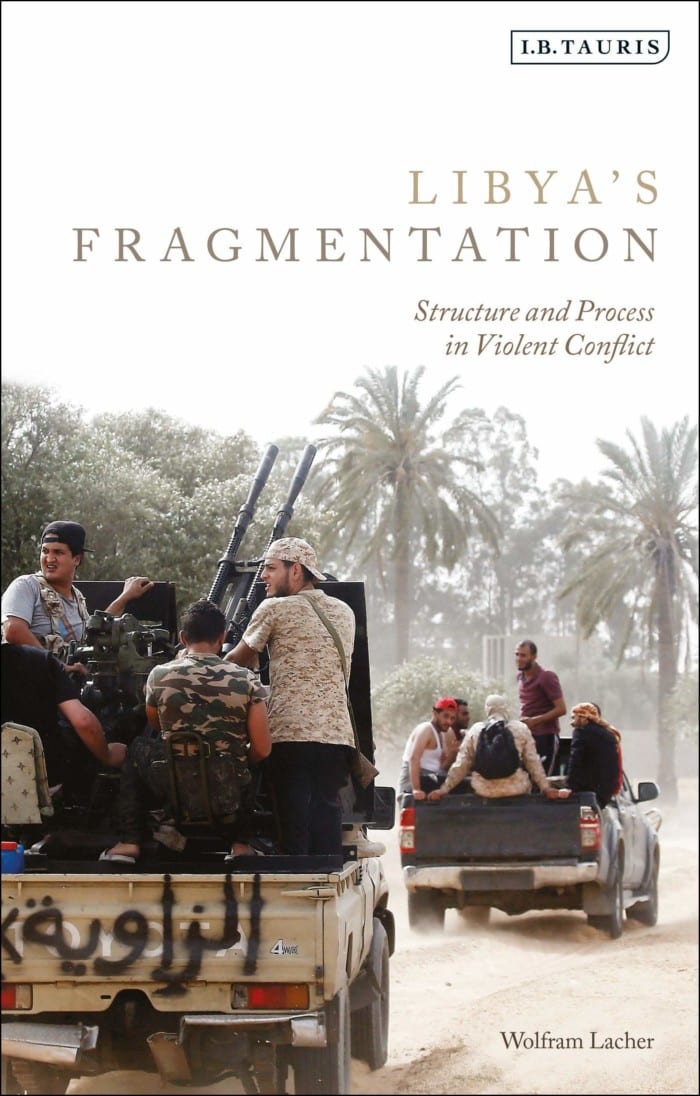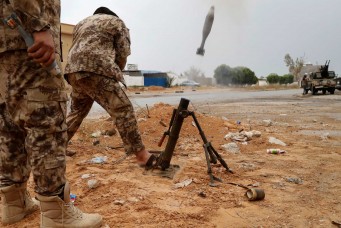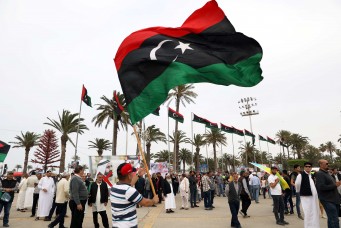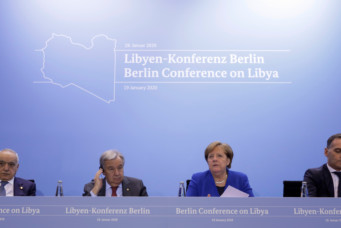Libya’s Fragmentation
Novel ways to understand why the Libyan revolution occurred and moves toward its resolution
Libya’s Fragmentation: Structure and Process in Violent Conflict. By Wolfram Lacher, I.B. Tauris, 2020
Wolfram Lacher’s book Libya’s Fragmentation advances a novel theoretical framework that emphasizes the centrality of the process of Libya’s unravelling. In doing so, Lacher makes a significant contribution to scholarship on contemporary events in Libya and to conflict studies more broadly.
Many discussions of Libyan politics today focus on identifying a route out of the country’s prolonged governance crisis. Broadly, there is consensus among Western powers that a political deal to agree upon a unified system of governance must be inclusive and that there is a need to reform the institutions that remain in the country. Yet, when it comes to determining who should be in the room to agree on such a deal—to decide on whom represents whom—agreement soon evaporates. Ahead of his planned national conference in April 2019, then-UN Special Representative Ghassan Salame said that he had more than a dozen categories of participants. Indeed, such is the extent of fragmentation within Libya today—to adequately represent the population, there would need to be six million participants, a number close to the country’s population.
There is no shortage of narratives to explain Libya’s predicament. For some, the ongoing conflict is between Islamists and non-Islamists; for others, it revolves around revolutionaries versus counter-revolutionaries, or democrats versus autocrats. Others define it as an inter-communal struggle. A close look at Libya’s development since 2011 reveals that all of these constituencies exist, yet none of them alone adequately explain the complex web of identities and influences that have impacted individual and collective decision-making.
Lacher uses his theoretical framework to escape the confines of these arguments by exploring intra- and inter-community dynamics at key junctures in geographic case studies—Misrata on the northwest coast, Zintan in the western mountains, Bani Walid in western/central Libya, and Tobruk on the Egyptian border, among others. Each of these locations had dramatically different experiences in the 2011 revolution and post-revolutionary period. Misrata and Zintan became revolutionary bulwarks and key shapers of the post-revolutionary order. Bani Walid experienced the revolution as a defeat, while in many ways the revolution appeared to pass Tobruk by.
The case studies in the book are empirically rich and illustrate many things, but one of their most helpful contributions is the way they are used to dissect assumptions made about community-level responses. Lacher argues that the positions of these communities in the 2011 conflict cannot be explained by a historic status of loyalism or opposition to the Gaddafi regime. All of these communities were wedded to the regime in one way or another, he argues. This argument holds, although it may be salient to point out that the connections between the regime and its cronies should be distinguished from the relationship between the regime and the communities at large.
Here comes the focus on the process to explain: for Lacher, asking why the Libyan revolution erupted is synonymous with asking how the revolution unfolded. For example, he argues that Misratan unity was “forged through the conflict” with regime forces to defend their city, creating a new Misratan identity that brought together tight-knit networks of armed groups, families, and businessmen. The rebellion in Misrata erupted “not because of…political marginalisation, but in spite of the close ties between its business elite and the regime.” Critically, this eruption was provoked by a chain of events elsewhere.
Lacher is hostile toward exclusively rationalist interpretations of collective action, but does place significant emphasis on the factors of geography and collective fear as a basis for pragmatic decision-making. For example, the location of Zintan in the Nafusa mountain range provided a buffer of natural defences against potential regime incursions in 2011. In Misrata, businessmen had the financial resources and a port to obtain sufficient weaponry and supplies. On the other hand, Bani Walid had no such advantages, heightening fears of potential collective punishment for siding with the rebellion. Again, its eventual position as a center for counter-revolution was “determined by the outcome of processes driven by violence” and not predetermined, Lacher concludes.
As a result of their experiences in the revolution, Zintan and Misrata emerged as confident local military powers. However, the alliances that Zintan formed in the Nafusa mountains would disintegrate, and the new-found unity in Misrata would dissolve, as processes of fragmentation endured. The two power centers would come to blows for control of Tripoli in 2014 as the transitional process broke down.
Lacher’s blow-by-blow account of these developments in the national picture is precise. Bani Walid has remained in isolation, while Tobruk—which did not suffer from the 2011 conflict or the violence that beset other eastern cities in the years to follow—has retained its established political order.
The book masterfully retraces the breakdown of Libya’s transitional process, the outbreak of a second bout of civil war in 2014, and the current governance crisis. The author examines the key actors (networks of businessmen, armed groups, and politicians) that eventually sought to violently contest the political order, rather than resorting to descriptions of amorphous blocs. Lacher contends that too much emphasis has been placed upon organization-centric frameworks that focus on “armed groups” as the unit of analysis in conflict studies. He argues with justification that the reality in Libya is that these forces are often so socially embedded in the country that distinguishing them from the broader community as discrete actors is not a valid approach. Instead, a broader analysis of social transformation would be more instructive. This is the crux of Lacher’s thesis.
A seeming challenge to this approach comes in the form of Khalifa Haftar, the commander of the Libyan Arab Armed Forces, who has consolidated power over eastern Libya since 2015 and initiated an ongoing third bout of civil war in April 2019. Lacher contends that Haftar was able to consolidate his power structure in the eastern Libyan borderlands due to a “lack of cohesive local and military forces” in the region.
The author argues that these conditions allowed Haftar’s forces to dis-embed from local social networks with the aid of foreign backing in a way that would not have been achievable in western Libya. However, while the characterization of Haftar as a warlord may be apt, Lacher does not consider the importance of the nationalist garb of his forces. Even though these forces are ultimately subject to the personalised rule of Haftar himself, the field marshal has spearheaded an avowedly national project that has distinguished him from his opponents. This has proved to be an important factor in Haftar’s expansion. Although the field marshal’s fortunes are now on the wane, Lacher offers Haftar’s rise as a sobering lesson that the processes of fragmentation underway today in Libya may lay the groundwork for consolidation tomorrow.
The canon of scholarly work on post-2011 Libya is growing but remains modest. This is particularly true of the post-2014 period. Lacher does much to fill this void. His contribution lies in two places: first, through a raft of empirical data collected through primary research with Libyan interlocutors; and second, and most valuably, through a theoretical framework that provides a means of conceptualizing and understanding Libya’s divisions. The narrative of the book is unerringly clear. The processes are highly complex and atomised, but that will come as no surprise to the scholar of Libyan politics, for whom this is simply a must-read.
Tim Eaton is a senior research fellow in the Middle East and North Africa Programme at Chatham House. His research focuses on the political economy of conflict in the MENA region and on that of the Libyan conflict, in particular. He has published widely on Libya for Chatham House and in media outlets including the Washington Post and War on the Rocks. On Twitter: el_khawaga.
Read More




